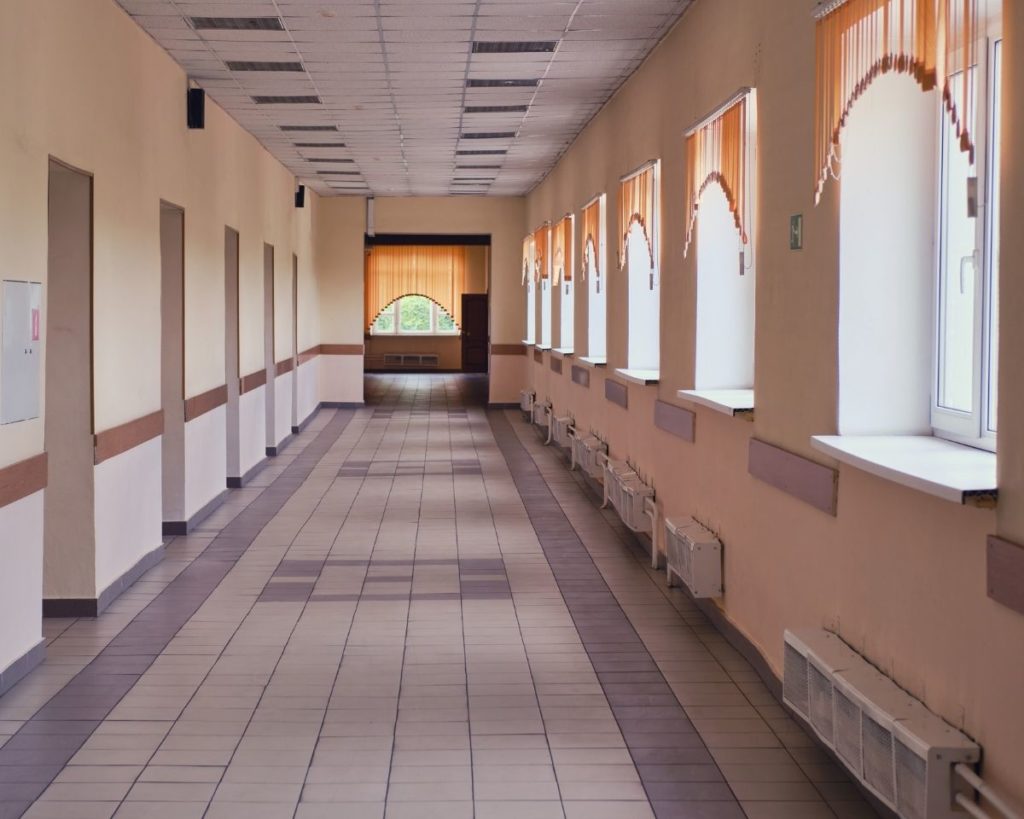Editor’s note: As the Denver Public Schools board votes next week to close and consolidate schools, enrollment zones – larger boundaries that include multiple schools – will be a key part of the strategy for reassigning students whose schools are closing. The district’s plan calls for the creation and expansion of enrollment zones. Students who live in enrollment zones choose from the schools in the zone, and are entitled to transportation to the school they attend within the zone.
Rob Schaller, the author of this piece, is a former DPS central administrator with extensive experience managing the district’s enrollment zones. See his full bio at the bottom of the article.
I was in the room when the first expansion of Denver Public Schools enrollment zones was conceived and later led the team responsible for their implementation from 2014 to 2019. On paper, enrollment zones may seem like a simple solution to the challenges of school choice and declining enrollment.
In practice, however, they often fail to deliver on their promises and, in many cases, do more harm than good.
Enrollment zones are larger geographic areas than school boundaries. Students who live within a zone are guaranteed enrollment in a school in that zone, but not guaranteed enrollment in any one specific school. Zones are intended to manage student enrollment in DPS, and to decrease segregation and inequality.
But as someone who helped implement them, I can say with certainty that they are not working as intended and are not the right solution as DPS moves to close additional schools in the face of declining enrollment.
Here are some of the reasons I believe returning to enrollment zones as part of the school closure and consolidation process amounts to a huge, unforced error on the district’s part.
Enrollment zones create and exacerbate community challenges
- Enrollment zones prevent neighborhoods from building strong community ties to schools
Neighborhood schools allow families to forge deep, lasting relationships with teachers, administrators, and fellow students. When a school is part of the neighborhood fabric, it fosters a sense of belonging, accountability, and pride.
Closing a community’s school and sending students to a neighboring school may be painful, but it at least offers the possibility of re-establishing those ties over time with a new school.
Enrollment zones strip this possibility away. Once a neighborhood is put into an enrollment zone, it no longer has a dedicated school to serve as the foundation for community engagement. In the most marginalized areas, this means that those communities will never again have the opportunity to rebuild a neighborhood school, leaving families disconnected from the schools their children attend.
This loss is particularly painful in communities that have already been undermined by gentrification, school closures, and other systemic issues.
2. Enrollment zones further institutionalize segregation across the city
Enrollment zones, as they are currently designed, end up perpetuating the very segregation they aim to prevent, particularly along lines of wealth and race.
They tend to be laid over the city’s most disadvantaged neighborhoods, where families have the least political capital to oppose their implementation. In contrast, affluent neighborhoods are less likely to be subjected to enrollment zones. This preserves those families’ access to neighborhood schools and allows them to enjoy the dual benefits of guaranteed enrollment at a local school and the ability to explore better-fit schools within the broader district through the DPS SchoolChoice system.
This creates a two-tiered system: wealthy families—often white families—have the emotional safety of knowing they have a spot at their neighborhood school, plus the freedom to choose from a wider array of options across the district.
Meanwhile, lower-income families living within enrollment zones—who are more likely to be families of color—are forced to participate in a choice system that, counterintuitively, actually limits their choices and chances for their children to attend the best-fit schools. The end result is a stark reinforcement of existing inequities.
Enrollment zones make school choice more confusing for families to navigate
- School choice is already complex. Adding enrollment zones exacerbates the complexity
School choice in Denver is already extraordinarily complicated. The matching algorithm that determines which students are placed in which schools is difficult to navigate and often confusing, even for those who work with it daily. Adding enrollment zones imposes another layer of complexity that makes the system even harder for families to understand.
Imagine a family trying to navigate this system, only to realize they need to understand how enrollment zones overlap with the broader choice process. The result is confusion, frustration, and ultimately, less informed decisions.
This is problematic for families trying to find a school for their students. It also increases costs at the central office, where new administrators are needed to manage and respond to questions.
2. Enrollment zones create disincentives for families, especially mid-year entrants
Families who enroll their children in DPS mid-year—often the most vulnerable population in the district—are at a significant disadvantage under the enrollment zone system. These students are more likely to be assigned to the least desirable schools within the zone, simply because those schools have more available seats. This undermines the intent of school choice, which is to match students with the schools best equipped to meet their needs.
Moreover, families in enrollment zones must list, at a minimum, every school within their zone on their SchoolChoice application if they don’t want to be shunted into whichever zone school has availability. This creates a difficult and often opaque decision-making process in which families must list schools they have no interest in attending.
They are required to navigate a labyrinth of choices, all while lacking the flexibility of families who live in traditional neighborhood boundaries, who can choose based on their true preferences rather than an artificial set of constraints.
If a student living within an enrollment zone wishes to attend a school outside of their enrollment zone, the issue becomes even more complicated. Students living in traditional boundaries on the other hand are free to list and rank their true preference schools without worrying about how to try to game the algorithm.
3. Enrollment zones risk pushing schools into a “death spiral”
One of the risks of enrollment zones is the potential for schools to spiral into even more rapid enrollment decline than would otherwise occur. Schools with already low enrollment are more likely to experience a “death spiral”—a scenario where declining student numbers lead to cuts in resources and further enrollment decreases.
Without the safety net of traditional school boundaries, these schools become even more vulnerable to closures, accelerating the pace of disinvestment in neighborhoods that are already struggling.
This was, unfortunately, one of the unacknowledged goals when the enrollment zones were first proposed—a way to institutionalize the closure of underperforming schools, particularly in disadvantaged areas.
Operational challenges with enrollment zones
1.Enrollment zones are expensive to operate
Enrollment zones are costly both in terms of time and resources. Each zone requires at least one full-time equivalent (FTE) staff member to coordinate between school staff, families, and district departments. On top of that, additional customer service representatives are needed to field the inevitable questions and concerns from families. The complexity of the system guarantees a high volume of inquiries, each requiring careful attention.
2. Enrollment zones require significant staff time and energy
For school leaders, enrollment zones take up an enormous amount of time and energy. Principals and staff are pulled away from their focus on academics and forced to spend valuable hours on marketing, recruitment, and managing the logistics of a system they did not choose. This added workload stresses school leadership and undermines their ability to focus on the core mission of education.
3. Enrollment zones concentrate power in the hands of bureaucrats
Enrollment zones centralize control over school placement in the hands of district administrators, often far removed from the day-to-day realities of the communities they serve.
This means that instead of families making decisions about which school can best serve their student, a small group of district officials decides where a child will go to school within an enrollment zone. In theory, this centralization is meant to streamline the process, but in practice, it leaves vulnerable students—especially those entering mid-year—at the mercy of an administrator who might not understand the unique needs of each child.
In conclusion: A well-intentioned, counterproductive idea
DPS officials conceived enrollment zones as a way to address the complexities of school choice and enrollment while increasing equity across neighborhoods, but they are not the right solution for Denver families.
They reinforce segregation, complicate an already difficult choice process, and impose a heavy administrative burden. Most importantly, they erode the possibility of strong community ties to schools, which is crucial for fostering thriving educational environments in our neighborhood schools.
Rather than further entrenching inequalities, DPS should reconsider the enrollment zone model and look for alternatives, such as redrawing institutionally racist and bizarrely gerrymandered school boundaries.
The problems with declining enrollment that the district faces today are real. DPS needs to find a solution that truly prioritizes the needs of all families, regardless of their race, income, or neighborhood.
Only then will we begin to build a more equitable, responsive education system for all Denver students.




